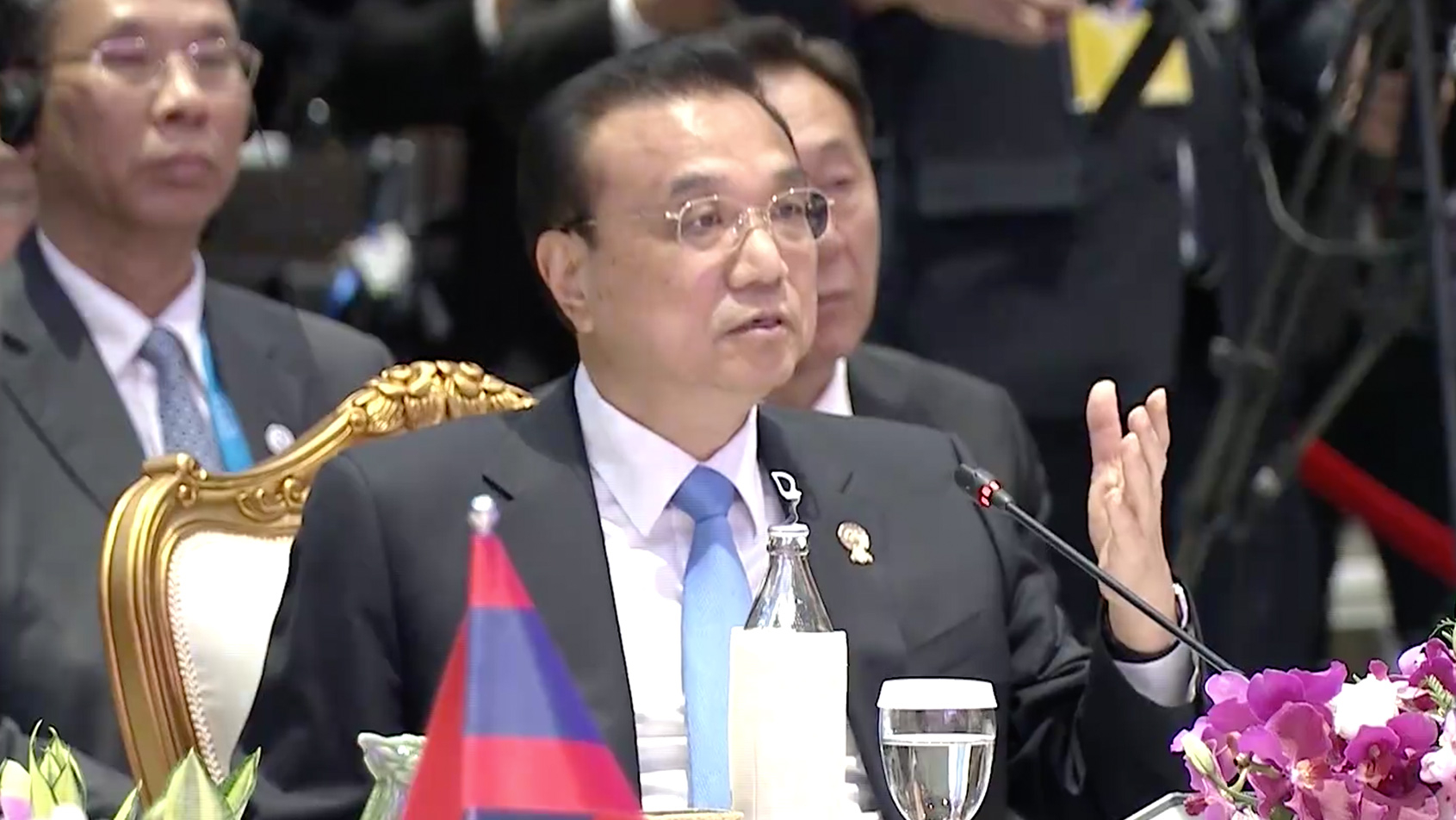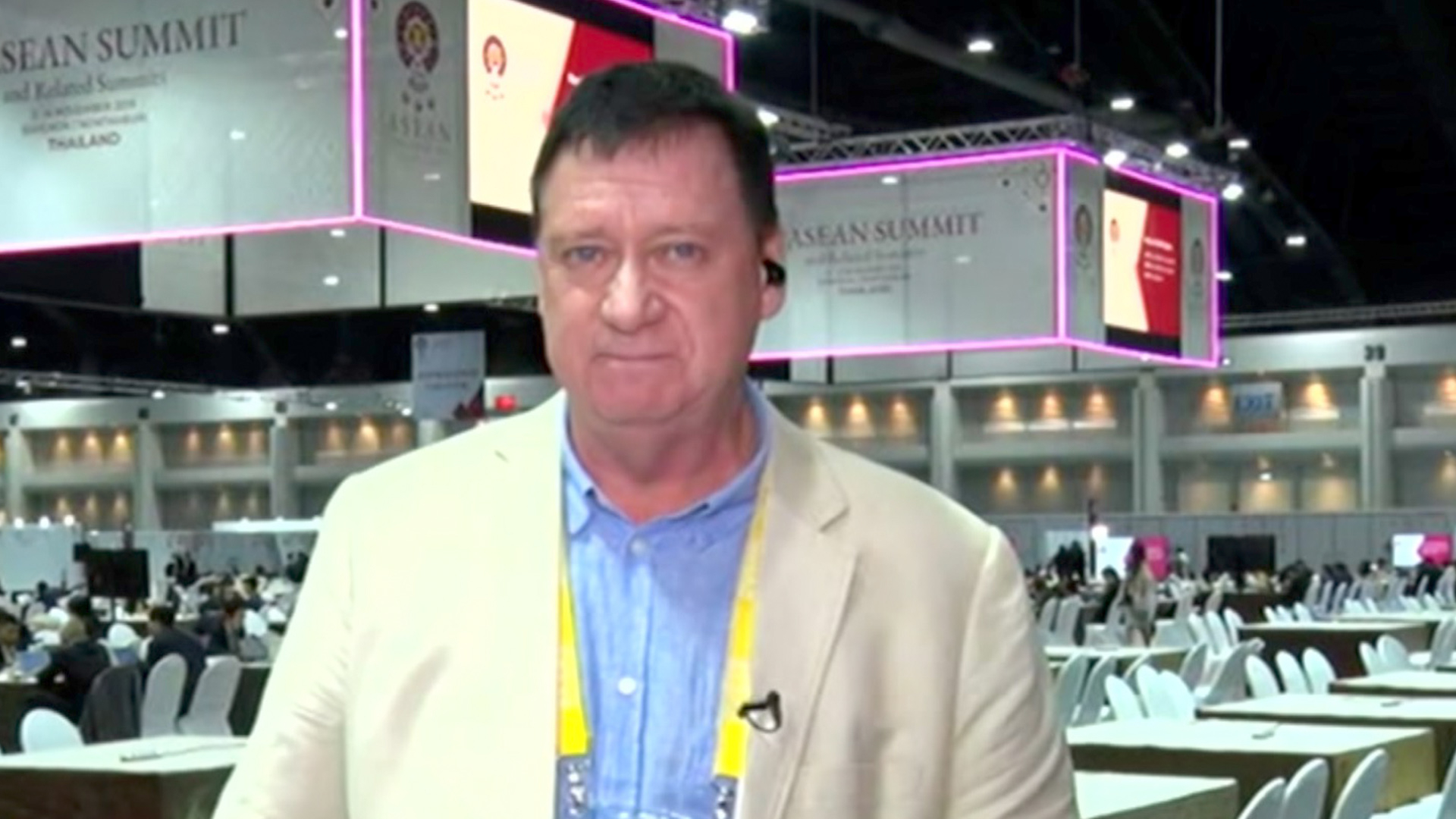Chinese Premier Li Keqiang said Sunday that he hopes all sides will actively carry forward consultations on the Code of Conduct (COC) in the South China Sea according to the previously agreed to timetable.
Li made the comment while attending the 22nd China-ASEAN (10+1) leaders' meeting in the Thai capital of Bangkok.
"Last year, I proposed a vision that the COC talks will be completed in three years," he said, noting that within one year, the first reading of the single draft negotiating text of the COC in the South China Sea was completed ahead of schedule, and the second reading had already been launched.
The contentious area has seen stable and rules-based governance in the past year under the joint efforts of all countries in the region, Li added.
The COC is an upgraded version of the Declaration on the Conduct of Parties in the South China Sea (DOC), Li said, urging relevant sides to follow the DOC principles, resist disruptions, meet each other halfway, and finish the second reading in 2020.
Li also called on all sides to continue to uphold peace, friendship, and cooperation in the South China Sea and safeguard lasting peace, stability in the region.
Read More:
China confident to complete a 'final, binding' code of conduct in the South China Sea
China, ASEAN witness booming trade, South China Sea progress
00:41

What's the South China Sea Code of Conduct?
A code of conduct in the South China Sea is a set of rules outlining the norms and responsibilities for ensuring peace and stability in the region. It guides proper practice for an individual, party or organization, and aims to create an effective mechanism in safeguarding safety and freedom of navigation.
Negotiations were formally launched in September 2013.
China, ASEAN to synergize BRI and MPAC 2025
China and the 10 ASEAN countries have also pledged to synergize development plans and work together to promote connectivity in the region, according to a statement issued at the 22nd ASEAN-China summit.
In the statement, both sides reaffirmed that synergies between the Belt and Road Initiative (BRI) and the Master Plan on ASEAN Connectivity 2025 (MPAC 2025) will contribute to regional connectivity, economic prosperity, peace and stability.
China was encouraged to "actively support the development and financing of ASEAN infrastructure projects and promote connectivity cooperation in areas such as railways, highways, port and harbors, airports, power and communication, for building better business and investment environment," the statement said.
All 10 ASEAN member states have signed bilateral agreements with China on BRI cooperation.
China, ASEAN to boost digital economy
During the meeting, Li also encouraged China and ASEAN countries to boost cooperation in the digital economy and e-commerce for the benefit of the region's growth and development, as well as to prevent financial risks.
Welcoming the designation of 2020 as the ASEAN-China Year of Digital Economy Cooperation, the joint statement also valued China's commitment to establishing mutually beneficial partnerships in developing smart cities.
01:37

China, ASEAN to level up trade and cultural cooperation
In the statement, China and ASEAN also reiterated their commitment to concluding the Regional Comprehensive Economic Partnership (RCEP) negotiations within this year.
People-to-people connectivity and policy dialogues will also be strengthened, it said, adding both sides will take more actions to strengthen media exchanges and cooperation to enhance mutual understanding and friendship between their peoples.
Established in 1967, ASEAN groups Brunei, Cambodia, Indonesia, Laos, Malaysia, Myanmar, the Philippines, Singapore, Thailand and Vietnam.
The ASEAN-China relationship is among the most substantial of ASEAN's dialogue partnerships, with both sides committed to fostering friendly relations, good neighborliness and mutually beneficial cooperation, the statement pointed out.